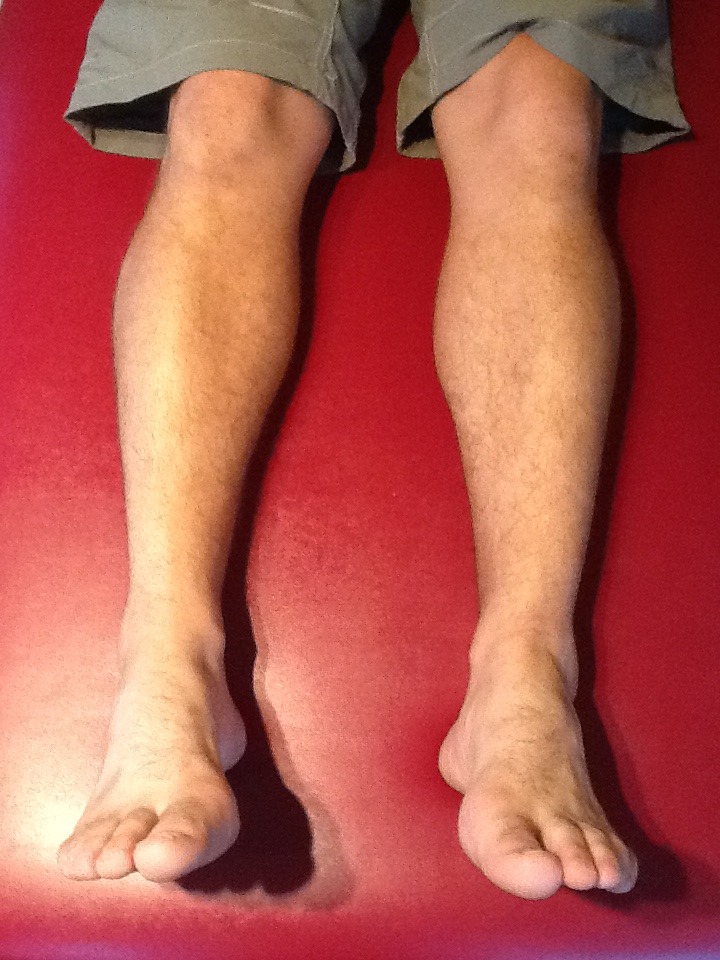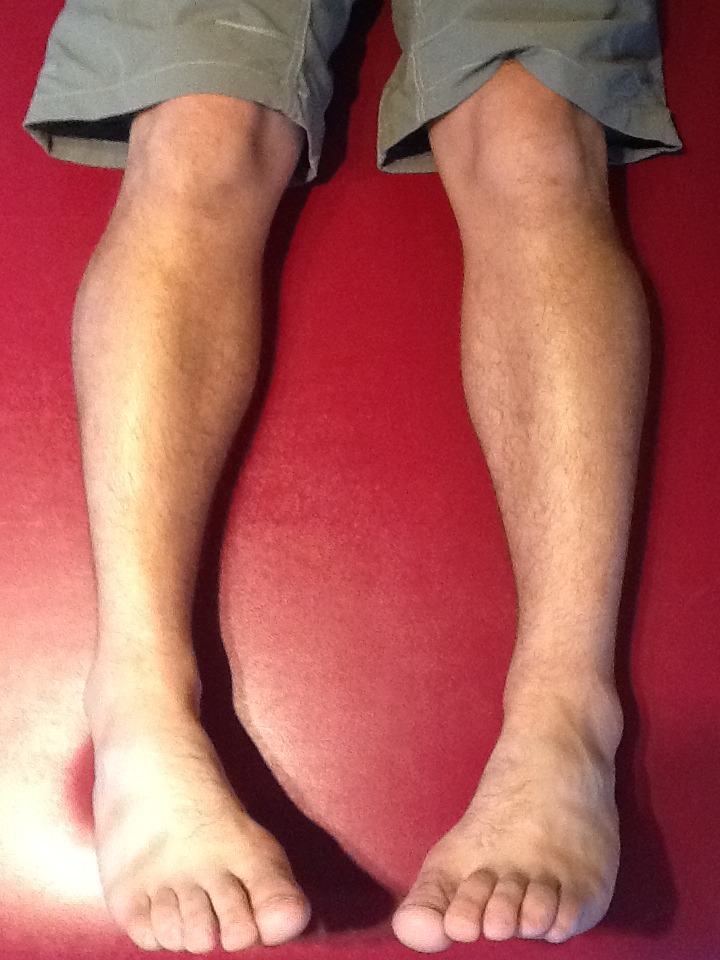Torsions
This gentleman has 2 excellent examples of thing you will see commonly: femoral retrotorsion and internal tibial torsion.
The neck of the femur usually makes an 8-25 degree angle (average 18 degrees) with the shaft of the femur. If this is greater than 25 degrees it results in a condition called femoral antetorsion and if less than 8 degrees, it is called femoral retrotorsion.
Femoral retrotorsion results in one having LESS internal rotation of the hip (and increased external rotation) and femoral antetorsion results in having a GREATER amount of internal rotation (and less external rotation).
We normally need 4 degrees of internal rotation of the hip to walk normally. Most people have at least 40 degrees. Look at the shots above of this gentleman who has almost zero. This range of motion needs to come from somewhere, and in this individual, it is occurring at the foot (in the form of a “spin” with gait, and complimentary tight achilles tendons).
Now look at the alignment of the tibial tuberosity with the lower leg. See how it faces medially? It should be about 22 degrees in the adult. More than this is called external tibial torsion and less (like here) is internal tibial torsion. Note how the foot is “toed in” on both sides? This will keep the foot in supination longer and you will weight the outside of the foot more. Put a conventional orthotic on this person without forefoot valgus posting and you are asking for a meniscus problem!
Now look at the “bow” (or varum, as it is called) of the tibia. Normal here is 4-6 degrees and he is in excess of 10. You will often see this in clients with internal tibial torsion.
So, what’s the fix?
You could do a surgery, like they did to Ethan Hawke in “Gattica” or you could make sure the foot has an adequate tripod (which this client did not). Tripod exercises (coming soon on the blog), EHB exercises, Toe waving exercises are all important, as well as foot, knee and hip manipulation to assure normal mechanics are present. Make sure that hip internal rotation is adequate and that gluteus medius and minimus finction is appropriate, as well as vastus lateralis (yes, lateralis is an INTERNAL ROTATOR when the foot is on the ground).
Torsions. Hope you are seeing these as much as we are.
Your twisted Gait Geeks; Ivo and Shawn




















